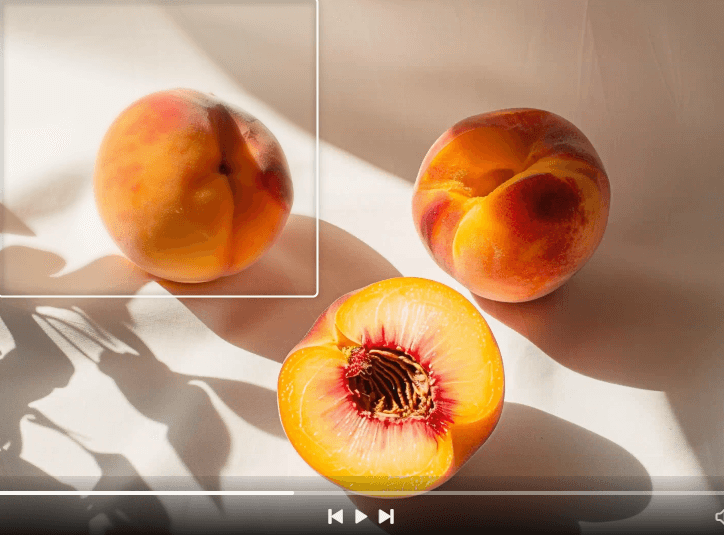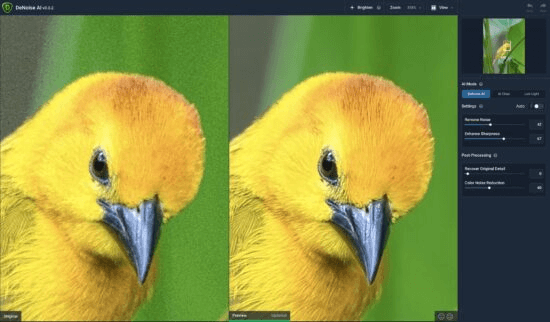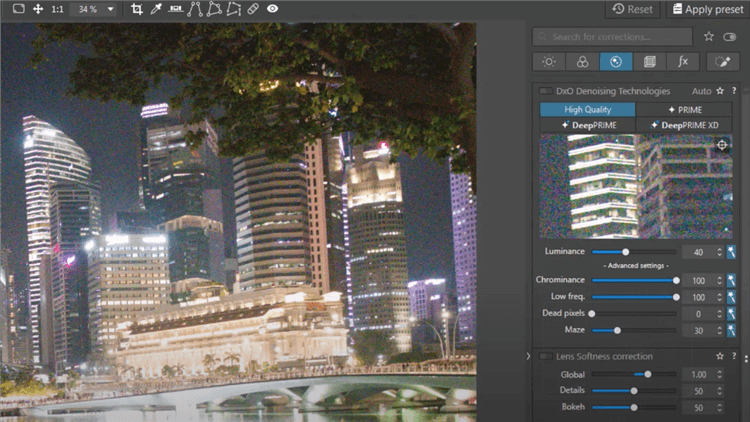Denoise, also known as noise reduction, refers to the process of reducing or eliminating unwanted noise from an image or video. Noise in visual media appears as random variations in brightness or color that are not part of the original scene or intended content. It can be caused by factors such as low-light conditions, high ISO settings, or limitations in camera sensors. Denoising techniques aim to improve the visual quality of images and videos by minimizing the distracting effects of noise and preserving important details. By reducing noise, denoising helps produce cleaner, sharper, and more visually appealing results, enhancing the overall clarity and aesthetic appeal of the media. Whether in photography, videography, or post-processing, understanding the meaning and techniques of denoising is crucial for achieving high-quality visuals.

What Is Denoising
What Does It Mean to DeNoise an Image?
To “DeNoise” an image means to reduce or remove the unwanted noise or graininess present in a photograph. Noise in images typically appears as chroma noise, random variations of brightness or color that are not part of the original scene. It can be caused by various factors such as high ISO settings, long exposure times, or limitations in camera sensors.

What Does It Mean to DeNoise an Image
When you DeNoise an image, you apply techniques or software tools to reduce or eliminate the noise while preserving the important details and overall image quality. The goal is to achieve a cleaner, smoother, and more visually appealing result.
The process of denoising involves analyzing the image to identify the noise patterns and applying algorithms or adjustments that specifically target and reduce the noise elements. Different denoising methods may be employed, such as filtering techniques, statistical analysis, or machine learning algorithms.
What Is DeNoise in Video Editing?
DeNoise in video editing refers to the process of reducing or removing noise from a video clip. Similar to still images, videos can also suffer from various types of noise, such as graininess, pixelation, or color artifacts. These noise elements can be caused by factors like low light conditions, high ISO settings, compression artifacts, or limitations in the camera’s sensor.

DeNoise in Video Editing
The purpose of applying DeNoise techniques in video editing is to improve the visual quality of the video by reducing distracting noise and preserving important details. The process typically involves using noise reduction software or plugins that apply noise reduction algorithms to the video footage.
Video noise reduction algorithms analyze the video frames to identify noise patterns and then apply filters or adjustments to reduce or eliminate the noise while minimizing the impact on the overall image quality. These algorithms may employ techniques such as temporal noise filtering, spatial noise reduction, or adaptive noise reduction to achieve the desired results.
When to Use Denoise?
Denoising techniques can be used in various situations to improve the visual quality of images or videos. Here are some common scenarios where denoising is beneficial:

When to Denoise
- Low-Light Photography or Videography: In situations where lighting conditions are challenging, such as shooting in dimly lit environments or at night, noise tends to be more prominent in the captured images or videos. Applying denoising techniques can help reduce the noise and produce cleaner and more visually pleasing results.
- High ISO Settings: When shooting in low-light conditions, photographers and videographers often increase the camera’s ISO sensitivity to capture enough light. However, higher ISO settings can introduce more noise into the images or videos. Denoising can effectively reduce this noise and improve the overall quality of the captured footage.
- Long Exposures: In long exposure photography, where the camera sensor is exposed to light for an extended period, noise can become more noticeable. Denoising can help mitigate the noise effects and produce smoother and cleaner long-exposure images.
- Compression Artifacts: During the process of compressing images or videos, particularly when using lossy compression formats, artifacts can be introduced, resulting in visible noise-like distortions. Denoising techniques can help reduce these compression artifacts and restore the visual quality of the media.
- Restoration of Older or Low-Quality Images/Videos: When working with older or low-quality images or videos, denoising can be used to reduce the noise that may be present due to limitations in the original capture devices or storage formats. This can help improve the clarity and overall appearance of the media.
What Is the Best Way to Denoise an Image/Video?
There are several excellent software options available for denoising images and videos. The “best” software ultimately depends on your specific needs, preferences, and the type of media you are working with. Among the most popular options available in 2024, you can give DxO PhotoLab a try. DxO PhotoLab is a comprehensive photo editing software that includes powerful noise reduction tools. Its PRIME (Probabilistic Raw IMage Enhancement) algorithm is renowned for its ability to effectively reduce noise while maintaining image detail and image quality.

How to Denoise an Image/Video
Step 1. Launch DxO PhotoLab and import the image/video you want to denoise
Step 2. Locate the “Denoising” tool in the right-hand side toolbar. Click on it to activate the denoising module.
Step 3. In the denoising module, you will find various sliders and controls to adjust the denoising Settings. As you adjust the denoising settings, you can preview the denoised image in real time by viewing the image/video at 100% or zooming in.
Step 4. Once you are satisfied with the denoising settings, click on the “Apply” button to apply the denoising effect to the image.
Final Thought
In conclusion, denoise, or noise reduction, plays a vital role in enhancing the visual quality of images and videos. By reducing or eliminating unwanted noise, denoising techniques help produce cleaner, sharper, and more visually appealing results. Whether dealing with low-light conditions, high ISO settings, or compression artifacts, denoising allows for the preservation of important details and the minimization of distractions caused by noise. Understanding the meaning of denoise and its various techniques empowers photographers, videographers, and post-processing enthusiasts to create high-quality visuals that captivate viewers. As technology continues to advance, denoising tools and software offer increasingly sophisticated algorithms and controls, enabling users to achieve optimal noise reduction while maintaining the integrity and aesthetic appeal of their media. The pursuit of noise-free images and videos through denoising is an ongoing endeavor, constantly pushing the boundaries of visual excellence.


